Baseball History Comes Alive Now Ranked #2 by Feedspot Among All Internet Baseball History Websites and Blogs!
Guest Submissions from Our Readers Always Welcome!
Scroll Down to Read Today’s Essay
Subscribe to Baseball History Comes Alive for automatic updates. As a Free Bonus, you’ll get instant access to my Special Report: Gary’s Handy Dandy World Series Reference Guide!
Joe DiMaggio Photo Gallery
Click on any image below to see photos in full size and to start Photo Gallery:
On Baseball History Comes Alive, we can never get enough of superstars like the great Yankee Clipper, Joe DiMaggio; and so we welcome Bill Schaefer back with an interesting summary of the early years of Joe’s life and career. I think you’ll enjoy Bill’s essay.
SAILING THROUGH THE DECADES WITH THE YANKEE CLIPPER-PART 1
“The phrase ‘off with the crack of the bat,’ while romantic, is really meaningless, since the outfielder should be in motion long before he hears the sound of the ball meeting the bat.” -Joe DiMaggio
“In the dance you can never aspire to be a Fred Astaire, or in baseball, a Joe DiMaggio-because their feet never touch the ground.” -Marty Feldman
My dad told me: “DiMaggio never made a great catch. He was always there waiting.”
It was Joe DiMaggio’s last World Series, Mickey Mantle’s and Willie Mays’ first. And, as the Yankees took their positions for Game Two, with the great Joe D. in center and the rookie “Commerce Comet” in right, the 1951 Fall Classic was being broadcast nationwide for the first time, with a coaxial cable linking both coasts.
With 66,000 in the stands, Yanks leading 2-0 in the top of the fifth, Willie Mays swatted a drive to deep right center. Mantle described what happened next:
“I was racing to the ball, not looking up…suddenly, there was Joe standing there already in position to catch the ball! I had to put on the brakes in a hurry and somehow got my cleat caught in a Stadium drain cover. I went down and thought my knee had snapped.”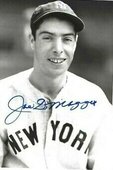
Mickey’s father, Mutt Mantle, was in the Yankees dugout and saw his son carried off on a stretcher. Mick suffered a severely sprained knee and would miss the rest of the World Series. Was Joe’s amazing ball-tracking radar inadvertently responsible for Mantle’s first major injury? DiMaggio said, “After that injury, Mickey never had a day without pain.” Be that as it may, let’s take a superfast cruise through the Yankee Clipper’s remarkable career. Don’t go too near the rail now, we don’t have time to fish you out of the water!
THE BEGINNING
As a prescient dawn ushered in November 25, 1914, in Martinez, California, Joseph Paul DiMaggio, the eighth of nine children of an Italian immigrant fisherman, seemed to have his historic journey already well-choreographed.
In 1933, with help from his older brother Vince, 18-year-old phenom Joe DiMaggio caught on with the San Francisco Seals and proceeded to dominate the Pacific Coast League, including a 61-game hitting streak. Yankee owner, Col. Jacob Ruppert, shelled out 75 grand (and five players) to put him in the lineup for New York on May 3, 1936, at Yankee Stadium: Crosetti ss, Rolfe 3b, DiMaggio lf, Gehrig 1b, Dickey c, Chapman cf, Selkirk rf, Lazzeri 2b, Gomez p. Joe and Lou combined for seven hits, as the Yankees bombed the St. Louis Browns 14-5.
In his first four years, the Bronx Bombers produced four World Series championships (beating the Giants twice, Cubs and Reds). DiMaggio and The Iron Horse were a formidable one-two punch for three years (especially the first two before ALS) highlighted by Joe’s .346 BA, 46 HR, 151 runs scored, and Lou’s .354 BA, 49 HR, and 158 RBI.
Lou Gehrig said, “DiMaggio is the greatest hitter I know.” Babe Ruth chimed in, “This DiMaggio boy sure looks like a natural to become the No. 1 hitter in the game!” Ty Cobb said simply, “DiMaggio is wonderful.”
His stance and swing were classic. One sportswriter described it this way,
“Stood stock still…head never moved with his feet wide apart…very short stride…bat held high and steady with his arms well away from his body…as the pitch approached he rotated his hips, sending power through his perfectly level swing.”
The fans appreciated Joe’s wonderful talent but…smile already, will ya? Joe projected an aura of unmatched class and graceful application but with none of the trimmings. Daily News sports columnist, Jimmy Powers, wrote, “DiMaggio made a mistake by rebuffing the friendly gestures of teammates Tony Lazzeri and Frank Crossetti when he first came up. ‘Leave him alone, boys,’ said Push-‘Em-Up one afternoon. ‘He knows it all.’’’ In time, though, players and fans alike began to understand the shy, quiet superstar.
A Movie Star, an MVP and More…
Joltin’ Joe was in love – he’d met Dorothy Arnold, a beautiful blond starlet, in the fall of 1937 when she and Joe “starred” in the forgettable film, Manhattan Merry-Go-Round. They were now an item.
After Joe’s first Most Valuable Player Award in 1939, sparked by a .381 batting title, Joe and Dorothy were married on November 19. (Soon thereafter, however, the young bride began to sense Joe’s increasing aloofness). A second BA crown followed in ’40, as the Clipper’s barrel connected to the tune of .352 with an American League-best OPS+ mark of 173. But the team fell into an inexplicable hitting slump, a bottom rung .259, and finished two games behind Detroit in third place.
A Year for the Books
1941 saw the infamous December 7; Glenn Miller topped the Big Band charts; America flocked to see “The Maltese Falcon;” Ted Williams hit an astonishing .406; and Joe D. was blessed with a beautiful son, Joseph Paul DiMaggio III. Dad also hit in 56 consecutive games.
It started May 15 with a single off lefty Ed Smith of the White Sox. It ended July 17 against Cleveland’s Al Smith (another southpaw) and Jim Bagby. First time up DiMag lashed a vicious grounder that third baseman Ken Keltner backhanded brilliantly near the foul line. “Low curve, I hit it pretty good,” said Joe. “Keltner actually caught the ball behind him. I never thought he’d get it.”
Joe had mixed emotions. “Naturally I wanted to keep it going, but I have to admit it was quite a strain. The main thing is we won the game.” (must read: Gary Livacari’s essays on The Streak and more about the brothers D.)
The Yankees beat the Dodgers four games to one in a World Series that included the famous Mickey Owen missed third strike to Tommy Henrich in Game Four. Joe won his second MVP, besting Teddy Ballgame 291-254 in the voting. The Clipper was at his peak now, gliding to balls in the outfield as if on an ethereal magic carpet, while batting .357 and sporting a league-high 125 RBI.
After a seventh straight 100+ RBI season and a loss to St. Louis in the ’42 Series, DiMaggio enlisted in the Army. His wife filed for divorce during his second year in the service. “He acted like a bachelor and chose not to talk to me for days at a time. He spent his entire life with his men friends,” sobbed a pale Dorothy DiMaggio.
Back home in 1946, Joe moved on stoically and signed more autographs during spring training that year than he’d ever done in his career. DiMaggio had transferred his love to his adoring fans, as well as his young son.
Bill Schaefer
Sources: Daily News Legends Series: Joe DiMaggio 1914-1999; Wikipedia, Dorothy Arnold; Wikipedia, Joe DiMaggio; Baseball Ref, Lou Gehrig; Baseball Ref; Joe DiMaggio; Mickey Mantle’s Worst Injury, Harold Friend; Wikipedia, 1951 World Series; Google search: Joe DiMaggio and Ted Williams, contrasting swings.
Photo Credits: All from Google search
Subscribe to our website, “Baseball History Comes Alive!” with over 1200 fully categorized baseball essays and photo galleries, now closing in on the one million hits mark with 842K hits and over 600 subscribers: www.baseballhistorycomesalive.com
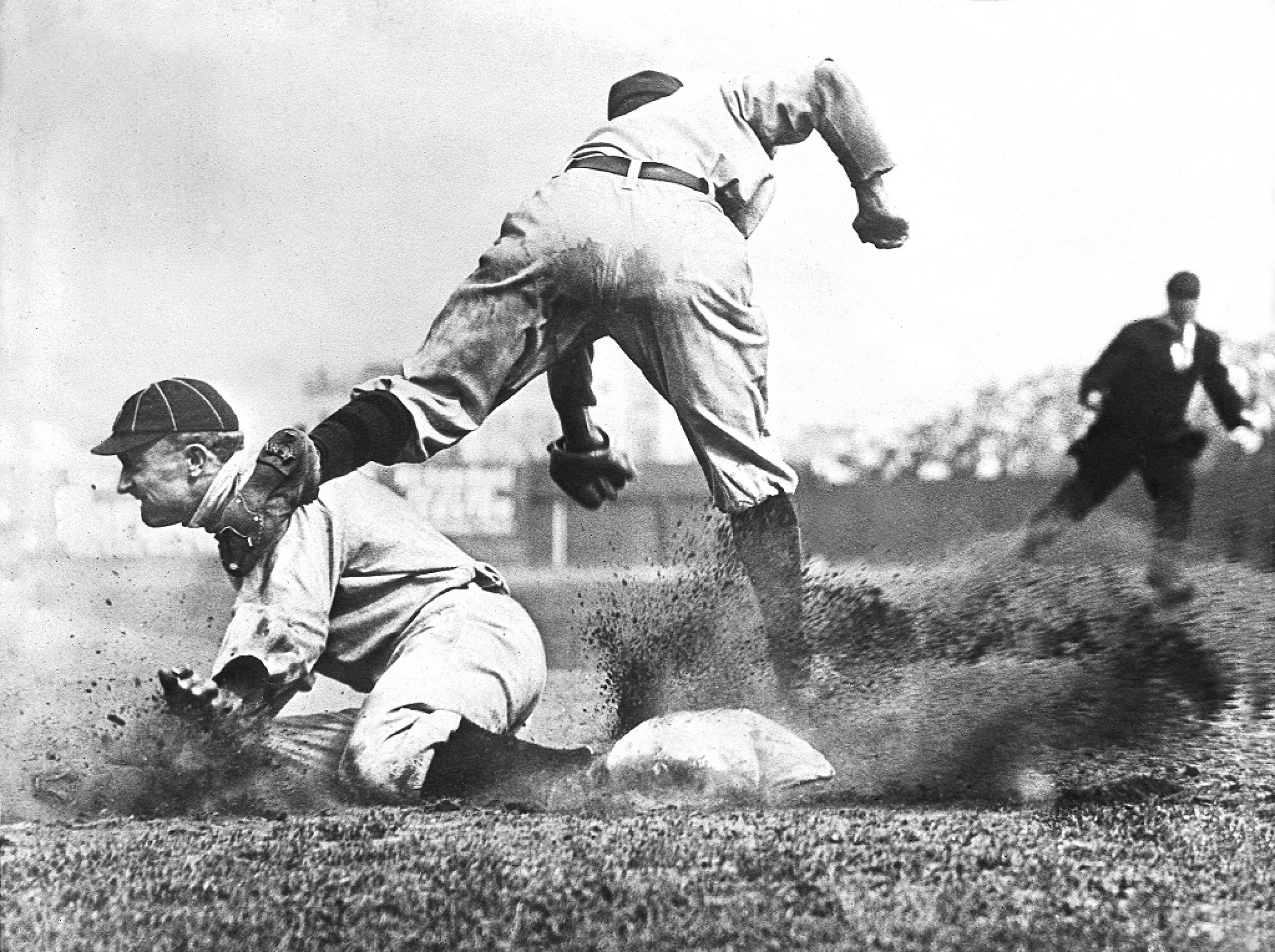
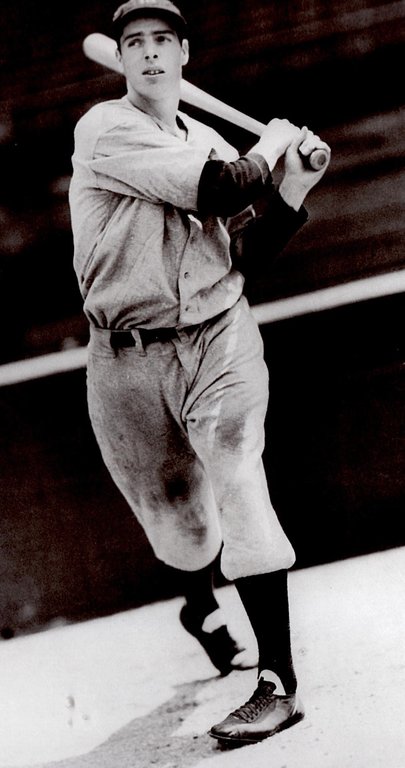
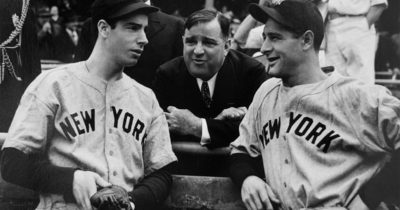
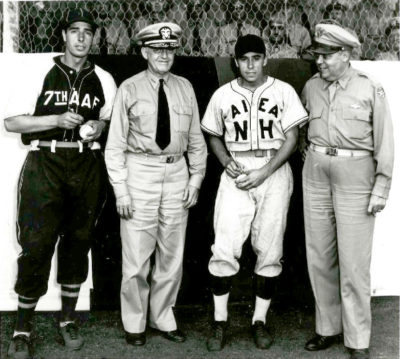
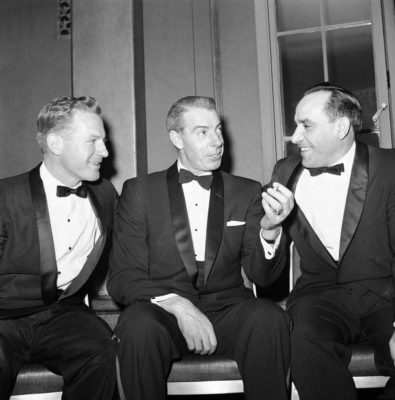
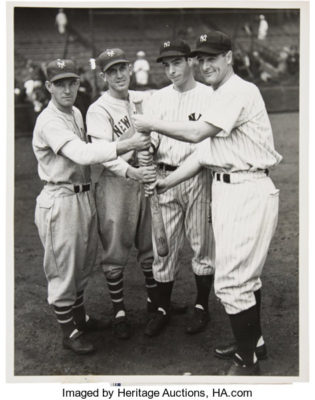
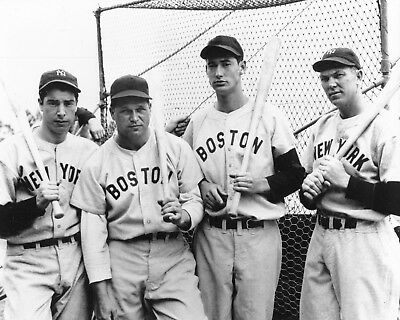
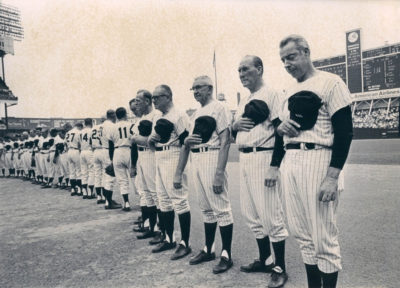
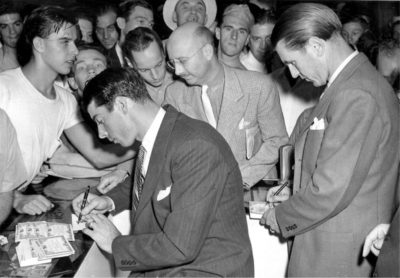
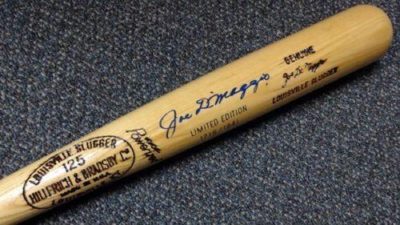
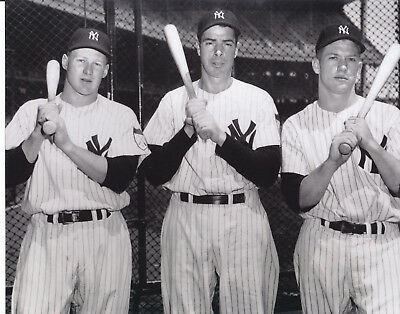
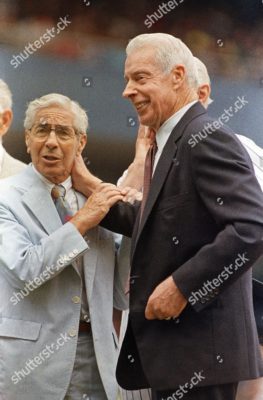
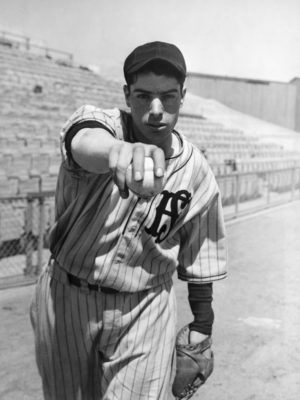
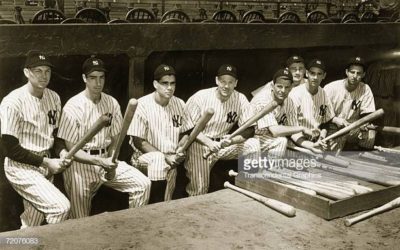
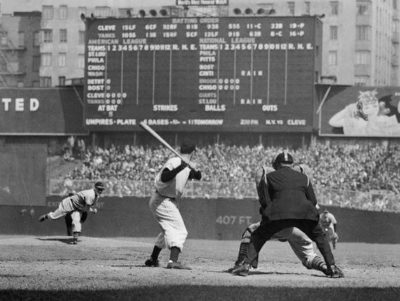
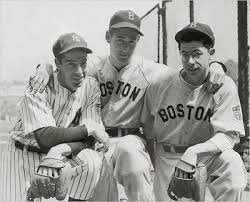
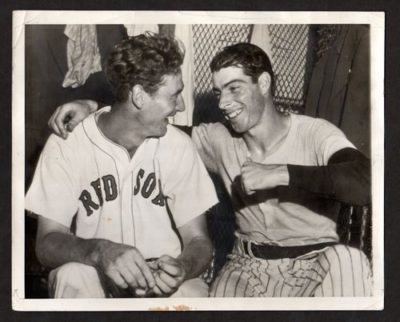
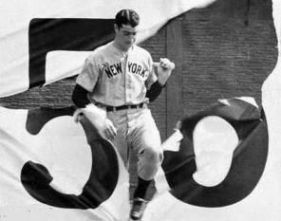
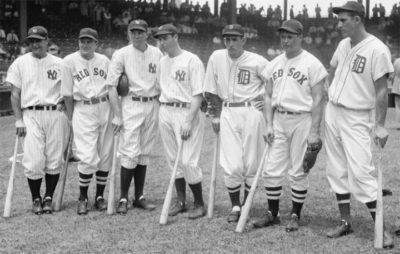
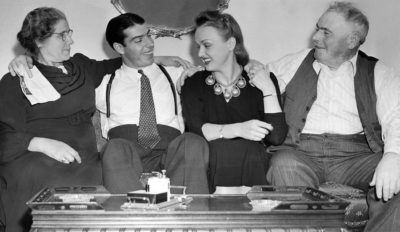
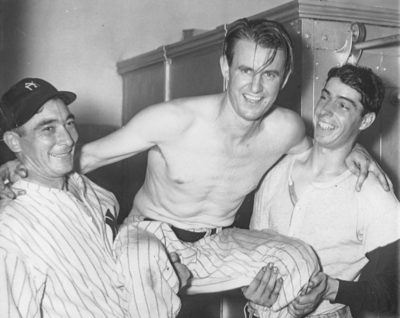
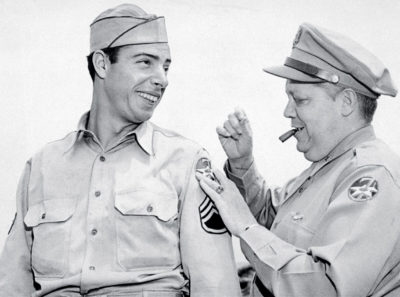
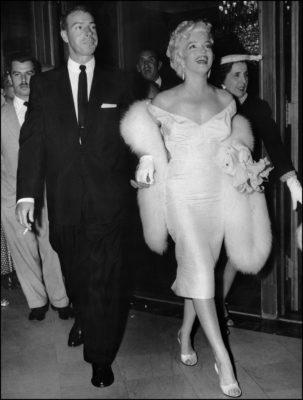
Thanks for a wonderful post on Joltin Joe. I love the quote about Fred Astaire and Joe Dimaggio, it rings so true. I should have known the article was written by Bill Schaefer, his writing is without a peer. As I was born in California in 1944, It was not possible to have seen Joe play in person. But I knew all about him and always thought he had an aura unlike any other baseball player I ever knew of. There was a certain mystique about his presence on and off the field. Probably Babe Ruth had that, but so far back and before the television era. It was special to me just to see Joe in the Mr Coffee tv commercials. When word came that he passed away in 1999, it seemed that we lost something very American and a big part of our heritage
Thanks for checking in Dennis. Always good to hear from you. Glad you liked the essay. I know Bill will appreciate the kind words!
Yes, Dennis, Gary is right–the kind words are very much appreciated! We all put a lot into these essays, words and pictures alike, to make it worth the reader’s time.
“Mystique” is the word for Joe, alright!
Thanks!
Bill
Great Essay! Thanks!
So glad you enjoyed it, Ken!
Great post Bill and thanks for sharing it. The part about Joe not smiling often enough during his playing days was unfortunately so true. Which is still very evident today by the countless stoic photos currently still circulating of him during his playing days. While he was definitely an all time great, if all one had to go by was photos of him in uniform, how could you not think he must have struggled mightily to play this game.
But there is 1 photo that is truly unique, if you check out the 3rd photo (the R314 one) in the link below you’ll see a very rarely seen side of Joe in uniform. Yes, that is him as an unguarded rookie with a great big smile, and a happy go lucky look. So to quote Mel Allen, “How about that”.
https://www.sportscollectorsdaily.com/joe-dimaggios-major-league-rookie-cards/
Thanks, Mark, terrific post. Yes, R314 is a happy one, alright. Oh, those choppers!
Before the war Joe made no bones about his need for privacy-everything was geared to performance between the white lines. After the service, he made an effort to be a better hero.
Thanks again!
Bill